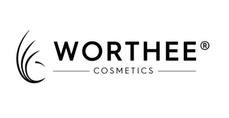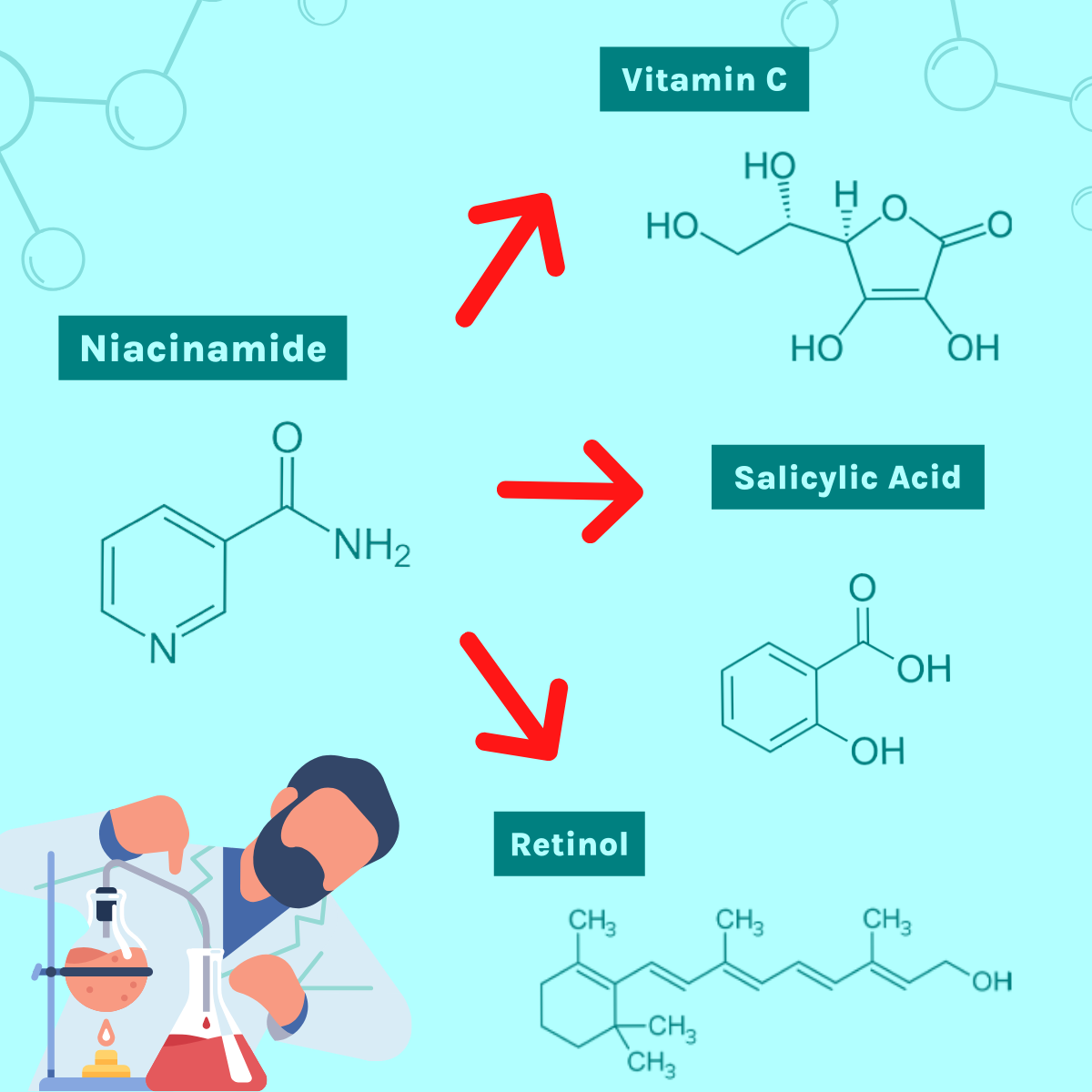Out of all the top-rated ingredients that we have seen formulated in skincare, it is safe to say that Niacinamide will always be one of the few that takes the cake. After all, what’s not to love about it?
Cosmetic chemists absolutely adore this cell-communicating ingredient because it dissolves easily in water and is stable against light and air. Then there are also the consumers’ non-stop praises about how their skin looks so much better thanks to this ingredient and its magical powers when used with the appropriate strength. Really, it takes a single Google search for one to discover the wonders of Niacinamide from the myriad of positive studies made by countless individuals around the world. The list just goes on and on.

In simpler words, Niacinamide (basic form of vitamin B3) is clinically proven to
- Brighten skin tone and lighten age spots or other signs of hyperpigmentation
- Reduce fine lines and wrinkles
- Prevent glycation (or protect the collagen from becoming hardened and disorganized, instead of supple and aligned)
- Treat acne
- Strengthen skin’s barrier
- Increase skin’s moisture level
- Diminish the appearance of pores
You may take a look at the above benefits and think that they all sound too good to be true. Well, studies say they actually are all true about Niacinamide! Not many ingredients are potent enough to earn this much fame, and Niacinamide has decades of experience being the popular multi-tasking agent in the cosmetic science industry, which is why it is loved by all.
Of course, what is a theory without practice, right? While there are already endless positive results and studies made on this ingredient, Niacinamide will only be effective once formulated expertly at an appropriate concentration. There are a lot of ways you can maximize its benefits, which is why you should take note of these best products that you can pair with your Niacinamide to address the stubborn skin concerns you’re suffering right now.
Brightening Skin Tone & Lightening Pigmentation with Niacinamide
An 8-week, double-blind, randomized placebo-controlled, split-face experiment shows that the combination of 4% Niacinamide and 2% N-Acetyl Glucosamine can drastically lessen the appearance of facial hyperpigmentation and improve one’s overall skin tone greatly.
Now, while the products played important roles in the experiment, it is mainly successful because of the way it is carried out by the people involved. Here’s a better way of understanding it. In this specific study, the subjects were told to use the products repeatedly during day and night for 8 weeks straight. These obedient peeps eventually achieved the positive skin outcome at the end of the eighth week, which is exactly the estimated time period for the results to start showing in the experiment. Basically, if you want that overall radiant look on your skin, you need to apply a product with Niacinamide and N-Acetyl Glucosamine, twice a day, for roughly two months. That’s right, two months.

The question is, how many people are actually aware of the time factor? Literally everywhere on social media, you can easily see random strangers ranting and complaining about products that they used for not even more than a week. When they find that there are no obvious changes on their face after immediate use, they will simply call it a fluke and toss it aside for a new one. Patience? None. Nil. Nada.
Like everything else in this world, there are reasons why people crave for instant results. Introducing the antagonist responsible for giving fake hopes and aspirations to buyers; the before-and-after photos. We are not saying that this type of advertisement is a scam, simply that the way it uses instantaneous brightening in the pictures may be a tad bit misleading to some. Nonetheless, even if a product contains the most brilliant skin lightening agents, you’ll still have to use it religiously over a period of time to reap the positive outcomes.
You may be wondering, so that’s it? Do you only have to wait? Well, we understand just one Niacinamide active might not be quick enough to show you the beautifying results you want to see. For that, we have been looking into a group of skin brightening ingredients that can actually push the radiant skin outcome faster when partnered with Niacinamide.
Of those we’ve reviewed, the skin brightening ingredients that are safe, stable and supportive for the biochemical mechanism of Niacinamide include N-Acetyl Glucosamine, Arbutin, Vitamin C, Azelaic Acid and Tranexamic Acid.
You can find the combination of Niacinamide with these brilliant whitening agents in our professionally-formulated
- Skinlex 10% Niacinamide Serum (Niacinamide, N-Acetyl Glucosamine, Licorice Root Extract, Hyaluronic Acid)
- Garden of Wisdom Alpha Arbutin 2% and Kojic Acid 1% Serum (Paper Mulberry Infusion, Alpha-Arbutin 2%, Sodium Ascorbyl Palmitate 2%, Niacinamide 1.5%, Kojic Acid 1%)
- Minimalist Vitamin C (Ethyl Ascorbic Acid) 10% + Acetyl Glucosamine 1% (Stabilized Vitamin C, N-Acetyl Glucosamine, Centella Asiatica Leaf Water, Hyaluronic Acid)
-
Minimalist Tranexamic 3% + HPA (Tranexamic Acid, N-Acetyl Glucosamine, Hyaluronic Acid, Salicylic Acid)

Lastly, sunscreen, sunscreen and sunscreen! No skin brightening treatment will act optimally without the help of the daily application of broad-spectrum sunscreen with at least SPF 25. So make sure you always keep one near you at all times.
Treating Acne with Niacinamide
In the treatment of acne vulgaris, 4% of Niacinamide has improved the condition of 82% of the patients, after consistent use for 8 weeks.
Besides BHA or Salicylic Acid, Niacinamide works well against acne because it carries soothing and calming abilities, and because it is a cell-communicating ingredient that “tells” the pores to secrete less sebum.

The propionibacterium acnes (or P. acnes) is a gram-positive bacterium. These bacteria feed on human sebum, multiply and cause inflammation within the pores. When you use Niacinamide, you are basically lessening sebum secretion in the pores, preventing these bacteria from absorbing nutrients to survive and multiply. In simpler terms, Niacinamide stops sebum secretion, meaning no more bacteria and no more acne.
To drastically speed up the acne-destroying war, using an anti-bacteria product and Retinoids such as Bffect Totara Acid-Free Anti-Acne Essence and Geek & Gorgeous A-Game 5 0.05% Retinal Serum is a total must. Anything that kills acne serves as your ally. Niacinamide and a bacteria-killing agent together, on the other hand, form practically a lethal combination of a military counsellor and the general itself. One would be busy strategizing ways to starve the bacteria, whereas another unswervingly slays P. acnes from left and right. At the end of the day, your skin is the winner of the acne war, and your reward is flawless, healthy skin paired with a good dose of a confidence boost.

In an anti-acne routine, we always recommend people with acne-prone skin use high-strength Niacinamide products together with an anti-bacteria active like Totaro or Benzoyl Peroxide. Not only does Niacinamide reduce sebum secretion as mentioned above, but it is also a skin brightening agent. It is extremely helpful in fading the unpleasant marks left by the inflamed acne condition.
Minimizing Pores with Niacinamide
We have seen how Niacinamide paired together with Totara, Retinoids or Benzoyl Peroxide can diminish the presence of acne, but how about combining Niacinamide and BHA? As an exfoliant, BHA is an oil-soluble ingredient that dissolves the sebum already secreted by the pores. Niacinamide, being a cell-communicating agent, tells the pores to secrete less sebum. Together, Niacinamide takes care of the before, and BHA works with the after. Both deal with reducing and dissolving sebum so both are brilliant in combating acne.

The same theory applies to shrinking pores. When the clogged sebum within the pores is being filled up, the sebum stretches and enlarges the pores. The problem is solved when Niacinamide steps in and controls sebum secretion, whereas BHA directly dissolves the clogged sebum within the pores. Over time, your pores will begin shrinking and your overall skin texture will look more refined.
Here’s another thing. Nowadays, there has been a myth flooding the internet about how Niacinamide shouldn’t be used with products containing acidic pH. There is also a study showing Niacinamide breaking down to niacin in low pH conditions, which releases a rather stinky gas known as ammonia (NH3).
In other words, the combination of Niacinamide and acid, known as niacin is less favoured compared to Niacinamide because niacin is more irritating and has a higher chance of giving skin redness. This conversion process is also known as non-enzymatic hydrolysis. But then, a big BUT THEN, the study uses hydrochloric acid (HCL) which is a super-strong acid, over an extended period of time. AHA’s and BHA’s however, are weak acids. Hence there really shouldn’t be any concern about using Niacinamide together with weak acids like AHAs and BHA since they’re not formulated together but instead used separately on your skin.
From the information above, if your main skin concern is enlarged pores, consider using a Niacinamide treatment with an outstandingly-formulated BHA exfoliant like the Minimalist Salicylic Acid 2%. The combination paths an amazing way to scale down your pore size. Niacinamide + BHA, you wouldn’t want to miss killing two birds with one stone, wouldn’t you?
Your Sharing: Have you tried any products featuring Niacinamide? How has your skin responded to them?
References:
Bissett, D. L., Robinson, L. R., Raleigh, P. S., Miyamoto, K., Hakozaki, T., Li, J., & Kelm, G. R. (2007). Reduction in the appearance of facial hyperpigmentation by topical N-acetyl glucosamine. Journal of cosmetic dermatology, 6(1), 20–26. https://doi.org/10.1111/j.1473-2165.2007.00295.x
Finholt, P., & Higuchi, T. (1962). Rate studies on the hydrolysis of Niacinamide, Journal of Pharmaceutical Sciences, 51(7), 655-661. https://doi.org/10.1002/jps.2600510710.
Shalita, A. R., Smith, J. G., Parish, L. C., Sofman, M. S., & Chalker, D. K. (1995). Topical nicotinamide compared with clindamycin gel in the treatment of inflammatory acne vulgaris. International journal of dermatology, 34(6), 434–437. https://doi.org/10.1111/j.1365-4362.1995.tb04449.x


